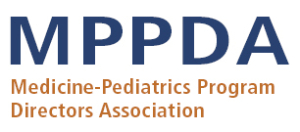MPPDA Members,
Here are the official results of the 2014 Match. In 2014, seventy-nine Med-Peds programs participated in the Match (an increase of two from 2013). A total of 374 positions were offered, an increase of 8 positions compared to 2013 (366). The total number of candidates applying to Med-Peds decreased from 603 in 2013 to 582 in 2014, but is still higher than the 560 in 2012. Of the candidates, 334 U.S. seniors (allopathic) comprised the applicant pool. Of the 374 positions offered, 362 were filled in the regular match (12 unfilled positions in 7 programs), yielding an overall fill rate of 96.8%. 75.9% of Med-Peds positions were filled by U.S. seniors. A brief summary table of the 2012-2014 NRMP Match data for Med-Peds is provided here:
| 2014 | 2013 | 2012 | |
|---|---|---|---|
| Total # of Programs | 79 | 77 | 77 |
| Total Positions Offered | 374 | 366 | 366 |
| Total Positions Filled | 362 | 363 | 344 |
| Fill Rate | 96.8% | 99.2% | 95.0% |
| % of Positions filled by US Graduates | 75.9% | 85.2% | 76.2% |
Brief Summary of the Match for Our Categorical Colleagues
Internal Medicine
In 2014 there was an overall increase in the total number of programs from 398 to 408. The total number of positions offered in the Match also increased from 6,277 to 6,524. The overall fill rate was 99.1% with U.S. seniors filling 48.5% of the available positions (slight decline from 49.9% in 2013).
Pediatrics
The number of programs participating in the Match increased slightly to 194 (191 in 2013). The number of positions offered in the Match also increased slightly from 2,616 to 2,640. Only thirteen positions went unfilled in the Match, yielding an overall fill rate of 99.5%. Approximately 69% of positions were filled by US seniors, which is similar to last year.
Family Medicine
The Family Medicine Match demonstrated an increase in the number of programs to 480 from 460 the year prior. Overall, 72 positions were added to the regular Match for a total of 3,109 positions (3,037 in 2013). One hundred thirty-two positions were unfilled across 64 programs. The overall fill rate remained unchanged from at 95.8% in 2014 compared to 95.9% in 2013. U.S. seniors comprised 45% of the filled positions in Family Medicine, which was a slight decrease from 2013 (49.9%).
A brief comparative summary table of the 2014 NRMP Match data across Med-Peds, Internal Medicine, Pediatrics, and Family Medicine is provided in the following table:
| 2014 | Med-Peds | Internal Medicine | Pediatrics | Family Medicine |
|---|---|---|---|---|
| Total # of Programs | 79 | 408 | 194 | 480 |
| Total Positions Offered | 374 | 6,524 | 2,640 | 3,109 |
| Total Positions Filled | 362 | 6,465 | 2627 | 2,977 |
| Total # of Unfilled Positions | 12 | 59 | 13 | 132 |
| Total Unfilled Programs | 7 | 21 | 4 | 64 |
| Total # of Applicants | 582 | 11,236 | 3,993 | 5,999 |
| Total # of US Graduates Applying | 334 | 3,762 | 2,065 | 1,664 |
| Fill Rate | 96.8% | 99.1% | 99.5% | 95.8% |
| Positions filled by US Graduates | 75.9% | 48.5% | 68.9% | 45% |
Overall, this year, the Match offered 29,761 first- and second-year positions, 500 more than in 2013, with more than half of the additional positions were in the primary care specialties of Internal Medicine and Family Medicine. Although the total number of registrants increased in 2014, the number of U.S. seniors declined with 89 fewer seniors registered than in 2013. The most competitive specialties were Neurological Surgery, Orthopedic Surgery, Otolaryngology, Plastic Surgery, and Radiation-Oncology, specialties that offered at least 50 positions in the Match and filled at least 90 percent with U.S. seniors. Follow this link for the full 2014 NRMP Advance Data Tables document.
Coming off one of our best matches in history in 2013, the results of the Match for Med-Peds in 2014 compares more favorably with our results in 2012. Med-Peds continues to grow as a specialty, and two new programs have opened this year at the University of Puerto Rico and at The University of Colorado at Denver. The number of positions offered and programs in Med-Peds is higher than it has been in over a decade, and Med-Peds remains the primary care specialty with the highest fill rate with U.S. seniors at 75.9%.
Looking forward to the Match for Med-Peds in 2015, we should continue to increase awareness of Med-Peds residency training at our local medical schools, as well as at schools without Med-Peds residency programs. The National Med-Peds Resident’s Association is working on increasing Med-Peds Student Interest Groups at medical school’s nationwide. It is important for Med-Peds program directors to take the opportunity to meet with pre-clinical and clinical students to educate them about the vast career opportunities available to Med-Peds physicians.
Best regards,
Russ Kolarik, MD
MPPDA President 2013


[…] Adapted from the MPPDA. […]